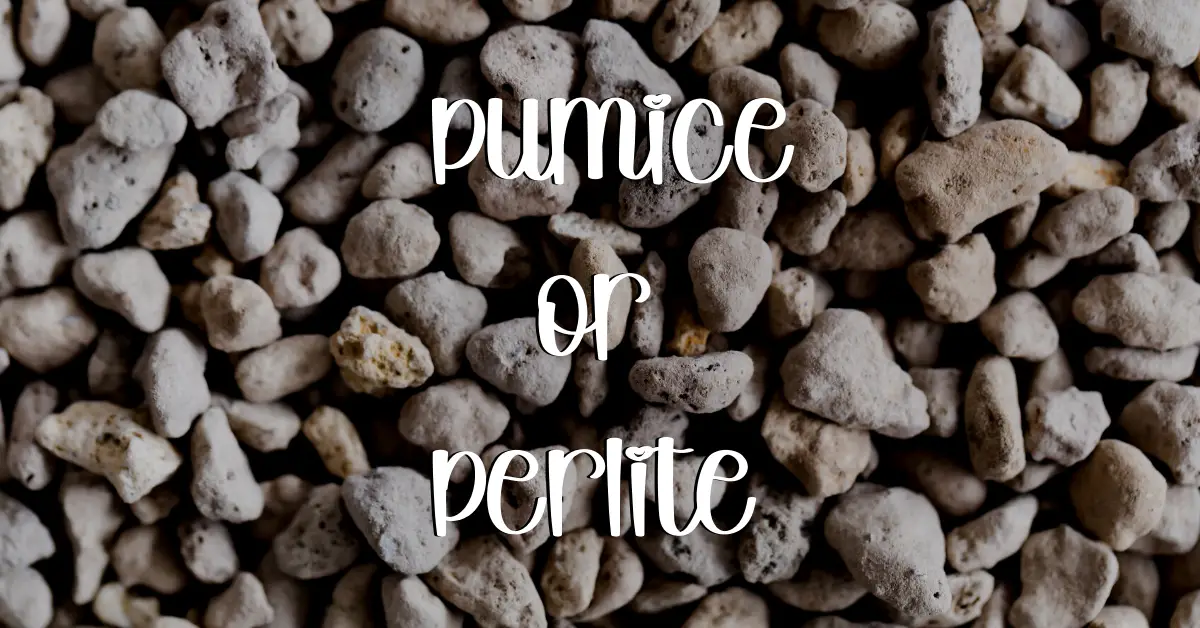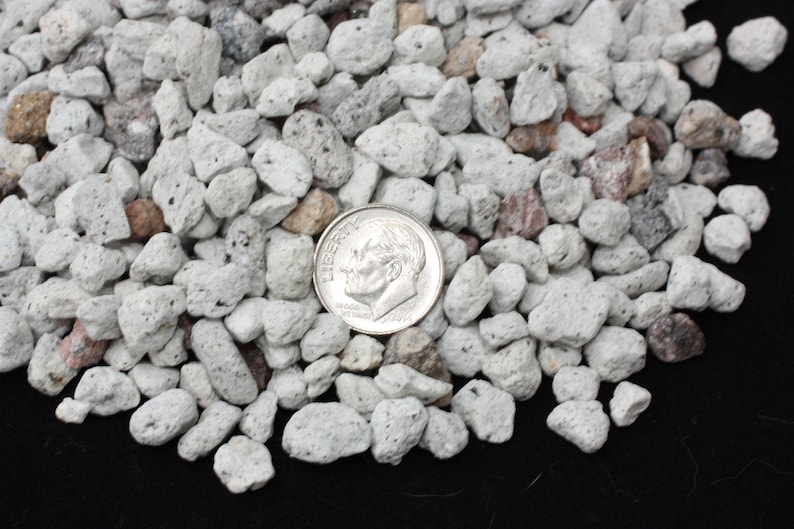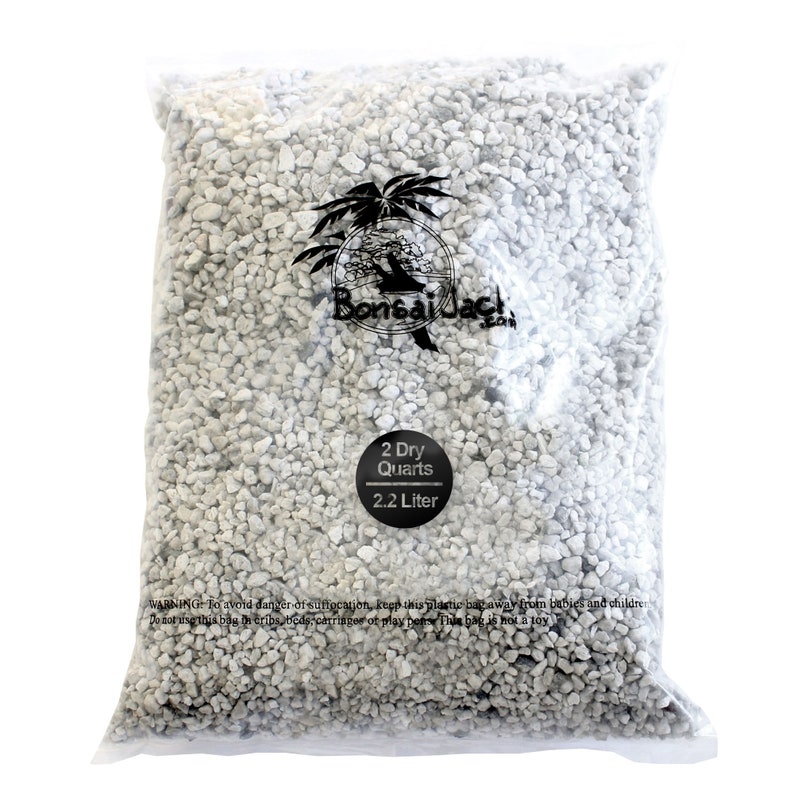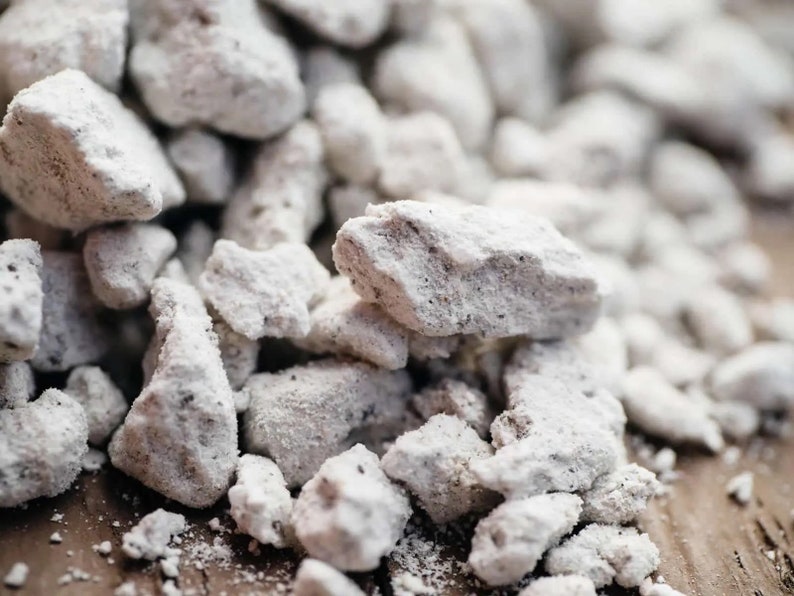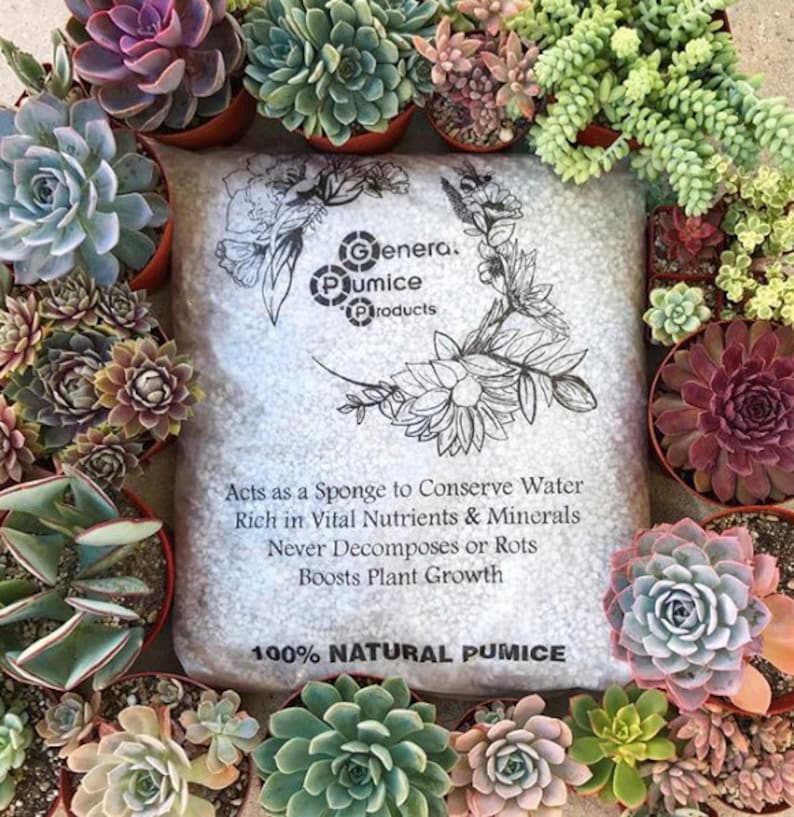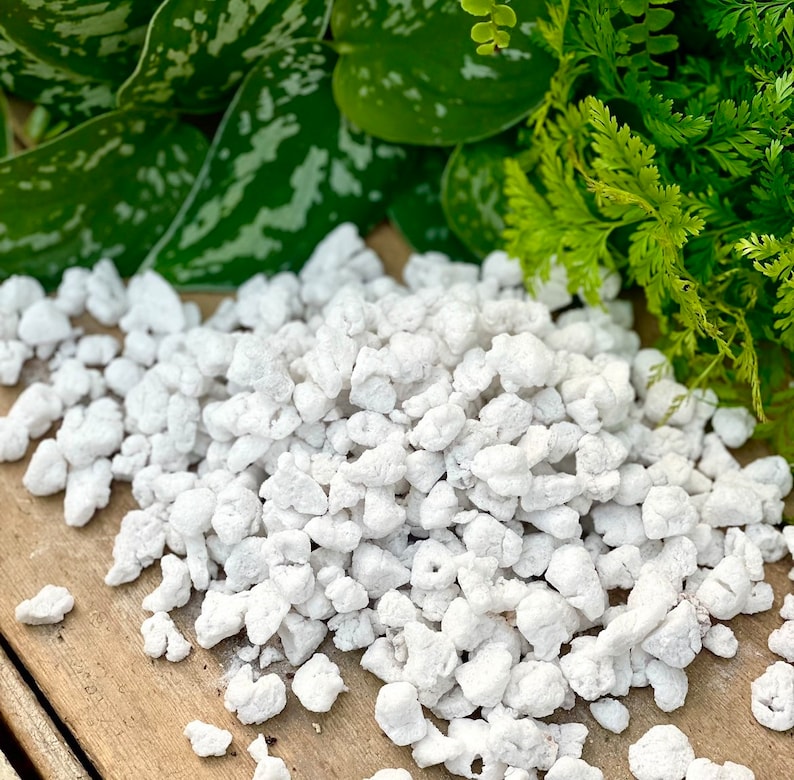Pumice and perlite are both commonly used soil amendments that are added to potting mixes to improve drainage and aeration. Both materials are lightweight, porous, and can help prevent soil compaction, making them ideal for use with succulents and cacti, which require well-draining soil to thrive. However, there are a few key differences between pumice and perlite that you should consider when deciding which material to use for your succulent soil.
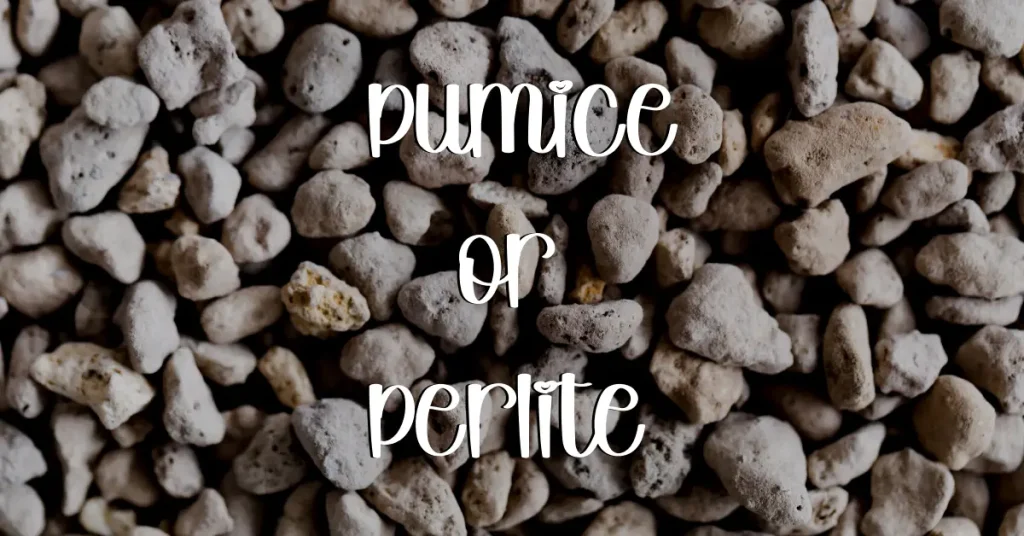
You might also like: Is Extremely Compacted Soil Choking Your Succulents Roots?
What’s the difference between Pumice and Perlite?
Perlite is processed and expanded to make it lighter than pumice.
Pumice is a naturally occurring volcanic rock that is formed when lava cools and solidifies quickly, creating a porous, sponge-like structure.
Pumice is highly porous, with up to 80% of its volume consisting of air-filled pores, which makes it an effective soil amendment for improving drainage and aeration. Pumice is also relatively lightweight, making it easy to mix into succulent potting soil.
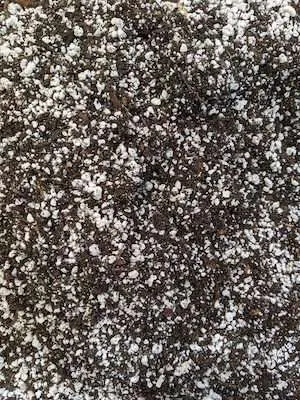
Perlite, on the other hand, is a naturally occurring, glassy volcanic rock that is formed when lava cools and solidifies slowly, creating a structure that is similar to pumice but with smaller pores.
Perlite is highly porous, with up to 90% of its volume consisting of air-filled pores, which makes it an effective succulent soil amendment for improving drainage and aeration.
Unlike pumice, perlite is processed and expanded by heating it to high temperatures, which causes it to puff up and become lightweight and crumbly.
You might also like: Drainage Hole at the Bottom of The Pot: Do Succulents Need Them (YES!) and How to Easily Drill One Yourself
Which is better for my succulent plants, Pumice or Perlite?
It comes down to personal preference.
When deciding which material to use for your succulents and cacti, it’s important to keep in mind that pumice is a naturally occurring volcanic rock, while perlite is a processed and expanded form of volcanic rock.
Pumice has larger pores than perlite, with up to 80% of its volume consisting of air-filled pores, while perlite has smaller pores, with up to 90% of its volume consisting of air-filled pores.
Pumice is relatively lightweight and easy to mix into succulent potting soil, while perlite is even lighter and more crumbly, making it easier to work with but more prone to dust and mess.
You might also like: Succulent Soil: Ultimate Guide & 4 DIY Recipes to Keep Your Succulents Happy and Healthy
Overall, both pumice and perlite are effective succulent soil amendments for improving drainage and aeration in potting soil. Pumice may be a better choice for heavier soils, while perlite may be a better choice for lighter soils.
Pumice and perlite materials are widely available at garden centers and online, and can be mixed into potting soil at a ratio of at least 25% by volume to improve drainage and aeration. The choice between pumice and perlite ultimately comes down to personal preference and the specific needs of your succulents and cacti. I use Kellogg Citrus, Palm and Cactus soil as a base and typically add more pumice over perlite since there’s already a bit of perlite in the pre-made succulent soil mix.
You might also like: Can Succulents Survive in the Rain? A Look at the Factors to Consider to Keep Your Babies From Natural Overwatering + 5 Ways to Improve Drainage

Succulent fertilizer available to purchase on Etsy.

